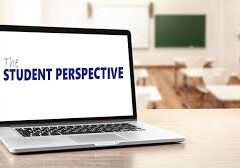The 4th annual Washington State Teacher Advisory Council (WATAC) Spring Conference was held virtually on May 3, 2020. In this conference, educators learned from their colleagues, got to network, and shared with one another. WATAC provided a full day of sessions starting with opening speaker Amy Campbell, Washington State Teacher of the Year. Lynne Olmos, CSTP blogger’s article, “This Is Heavy: The WATAC Conference and Finding Meaning,” focuses on the presentations from the session speakers.
One of the few great things that have come from this pandemic is the shattering of distance boundaries with professional development. As an eastern Washingtonian, WATAC meant at least 20 hours of road travel, costly hotel stays, and an entire weekend away from my family. I want to say THANK YOU WATAC for doing the impossible and providing a virtual conference in such a short period of time. I hope the option to join conferences virtually continues post-COVID.
The WATAC break-out sessions offered a depth of perspective from multiple stakeholder panels. The student panel interested me the most. It was broken up into three student panel sessions, K-5th grade, 6th-8th grade, and 9th-12th grade. I attended the 6-8th grade student panel because I wanted to better understand the student perspective during this unique period of time. Students discussed what is and isn’t working during distance learning.
What Is Working
Students enjoy the control of waking up when they feel like it. Having the flexibility in allowing their bodies to receive adequate sleep without the pressure of needing to be at school by a certain time. This makes it easier for students to concentrate when they begin their school work.
Students appreciate when teachers respond quickly to emails. We have to remember, as adults, we have become accustomed to giving colleagues a 24-hour window to respond to our emails. However, we must not forget that students haven’t experienced frequent communication via email.
Suggested schedules were also requested by students. Many students feel somewhat lost since distance learning began. Students felt it would be helpful if a simple schedule were created by their teachers recommending when to work on lessons throughout the day or week. A recommended schedule would provide structure, limit student stress, and help them organize their ideas without having to scroll through assignments or emails.
What Isn’t Working
Too many technology platforms are being used. Students are frustrated in learning various ways to submit work, communicate with their teacher, and/or demonstrate their understanding. It has become a juggling act to remember which platforms to use for each teacher. They wish all their teachers would collaborate and decide to use the same platforms.
Students don’t feel they are getting enough work. Some students expressed that they are only receiving review work and haven’t learned anything new. Other students said they aren’t given enough work to do. This has been very irritating to them. Their big question was, “Why aren’t my teachers assigning new work?” Students want to be challenged.
Overwhelmingly, the student panel also let us know that they have friends with limited internet capability. Their friends aren’t able to receive the same level of education as students with no internet complications. Yes, students see the inequity in distance learning.
There are many workgroups forming that are focusing on the 2020-2021 school reopening. Remember it is vital to have representation from students and parents. This reminds me of what an 8th-grade student panelist said, “If teachers just understood us.” Moving forward, all educators need to make a concentrated effort in listening to the needs of students and parents.
The first step in understanding them is to talk with them and ask for feedback on what is and isn’t working. This knowledge will help educators tailor their teaching to better fit students’ needs. Their stories and feedback should be what we, as educators, listen to in order to determine the next steps in creating their best future.
Like Doc Brown said in Back to the Future: Part III, “Your future hasn’t been written yet. No one’s has! Your future is whatever you make it. So make it a good one!”

Thank you for elevating their voices, Swan. It is my sincere wish that we can get this a bit more figured out with the best interest of the kids in mind. If we can all get on the same page, or adjacent pages, it would be a start, right?
At the micro level, I know that we as a building (ten staff members) are deploying a variety of means of contact to our current students to get their perspectives on what is working and not working. My worry, though, is that we’ll get things figured out based on feedback from our kids, but we’ll get superseded by decisions from higher up. Usually my district does a good job listening to student input… what really matters in this case, though, is whether we’re listening to enough of a cross section of students. We need to hear from the kid with the rough discipline record or hard-earned skin-of-their-teeth C-minuses as much as we do the presumptive valedictorian or the ASB president.